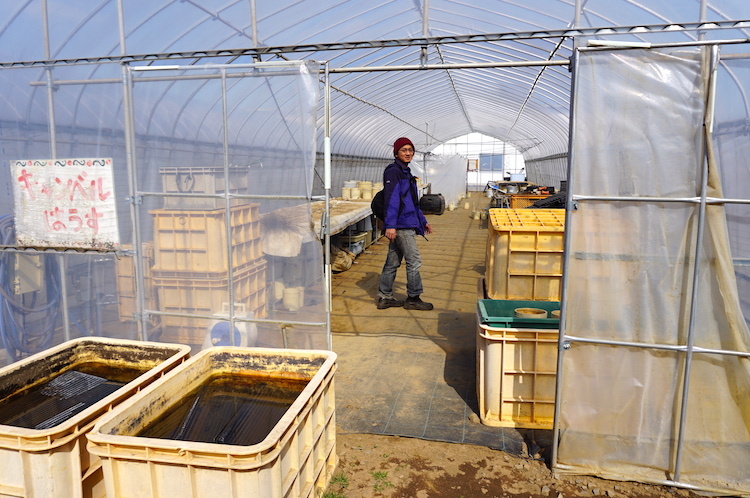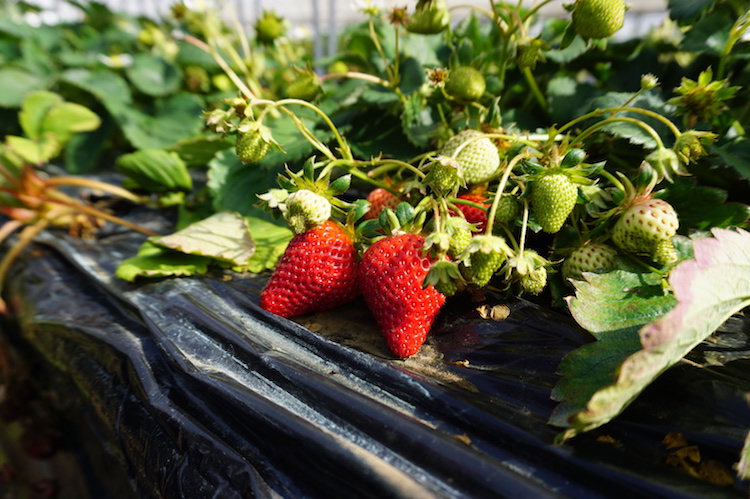Agriculture: the smart DIY greenhouse from Japan
Published 28 April 2017 by Cherise Fong
Conceived with Japanese farmers in mind, UECS-Pi is a functional prototype of an autonomous greenhouse that runs on a Raspberry Pi.
From our correspondent in Tokyo (words and photos)
In the age of the Internet of Things (IoT), a smart greenhouse is nothing revolutionary. But the systems that control it are both complicated and costly. The little software company Wabit rose to the challenge of creating an autonomous greenhouse system that would be accessible to Japanese farmers, both technically and financially.
Since 2005, Japanese researchers have been developing UECS (Ubiquitous Environment Control System), a decentralized, modular and open source control system that allows users to transfer information between different platforms using the open protocol CCM (Common Correspondence Message) and visualize the data in real time. Wabit, specialized in system integration and software, makes UECS accessible to advanced makers with green thumbs.
For budding farmer-makers
In the age of DIY, the UECS-Pi project, which Wabit launched in prototype mode in late 2014 and has been systematically updating ever since, uses the basic equipment of the maker world: sensors and other cheap components, the Arduino microcontroller and the Raspberry Pi single-board computer. UECS-Pi is designed for budding farmer-makers, while also seducing researchers experimenting with new DIY methods…

This was the precisely the case of Nur Akbar Arofatullah, member of the Indonesian collective Lifepatch, working for the past two years in Ibaraki prefecture northeast of Tokyo as a researcher in agricultural biotechnology. Once he learned about UECS-Pi from his professor at Ibaraki University, Akbar tackled the DIY project solo in spring 2016, relying solely on Wabit’s freely accessible and extremely detailed online documentation (Google-translated from Japanese). He began by buying everything he needed on AliExpress (much cheaper than Amazon, according to Akbar). Fortunately, he already had some experience in electronics and basic programming knowledge. Once in a while, he consulted fellow Lifepatch member Ilo to troubleshoot code.
Strawberries under surveillance
Two weeks later, the first prototype was up and running: UECS-Pi monitored a hydroponic culture of strawberries in a small greenhouse situated on the university campus. Outside the house, a solar radiation sensor was attached to the roof. Inside, thermocouple wires and SHT21 sensors measured the temperature and relative humidity, alongside an irrigation pump. The controller node hung on the wall. The sensor node was encased in a waterproof box by the entrance. Akbar also made his own modifications, such as the Arduino Uno-based thermocoupler to store data from multiple sensors on an SD card.

When the conditions of the greenhouse, which is constantly monitored, become unsuitable for the strawberries, the system sends an e-mail to the 15 people concerned with the fruits’ well-being. In the near future, actuators such as the water pump will be configured to react automatically to the situation. For now, a human runs over to the house to fix the problem. But UECS-Pi is able to control many other actuators: open/close or position a curtain, screen, heating, etc.

It was at the greenhouse horticulture expo GPEC, in July 2016, that Akbar finally met members of the UECS-Pi team in Tokyo. The Wabit company employs about 20 people, of whom 4 work in the Smart Agriculture department dedicated to developing UECS-Pi (2 in Fukuoka and 2 in Tokyo). Given their limited human resources, the team’s priority is to make every client as autonomous as possible.
“Today, anyone can buy an Arduino or a Raspberry Pi for DIY,” explains Hiroyasu Toita, UECS-Pi project leader and CEO of Wabit. “But farmers lack the technical skills necessary for environmental monitoring. High-tech systems that come from overseas are too expensive for Japanese farmers, whose greenhouses are generally compact. We needed to find a solution that was inexpensive, easy to implement and maintain in small greenhouses by non-technicians. Three factors emerged: low cost, open source and comprehensive DIY manual.”

Ever since the release of the UECS-Pi SDK in November 2014, through the latest update of the user manual on May 1, 2017, each step of the building and assembly process is meticulously documented in a detailed tutorial, including all the resources for obtaining the components and tools in Japan. The team regularly maintains a complete wiki of the entire system, moderates a community user group where people can ask questions online, and tries to provide as much customer service as possible by telephone and e-mail.
Making farmers’ lives easier
For those who prefer to save time over money, UECS-Pi is also available in simplified kits: the basic kit (coming soon) and the controller kit. Wabit gives workshops in agricultural research parks to build the nodes and configure the electronics within a day. Once the system is integrated into their greenhouse, farmers have the option of customizing it further, pairing it with an Android mobile application, storing and visualizing their data in the UECS station cloud, and even developing their own applications with the open source UECS-Pi SDK.

Kazuharu Kobayashi, Tokyo-based engineer of UECS-Pi and workshop leader, admits that installing and maintaining the system requires the farmers to be willing to learn and adapt to this new way of doing it yourself. But he is confident in the future of Japanese agriculture.
“These days, many farmers between the ages of 20 and 40 work with their parents,” he says. “As Japan’s population continues to age, the parents will soon no longer be able to work, and the farmers will have to take care of them, in addition to growing and selling vegetables. This is too much work for farmers, who are already starting to desert this unforgiving lifestyle. Our [DIY] system can make their lives easier and open many possibilities. Of course, system maintenance requires basic technical knowledge, but they learn little by little, we support them in the user group, and keep a good relationship with all our clients. The most important thing is neither the technology nor the system maintenance, it’s the concept of this new methodology for working.”
More about UECS-Pi
